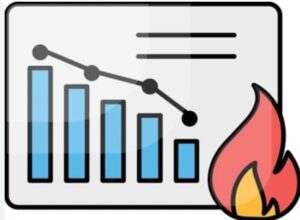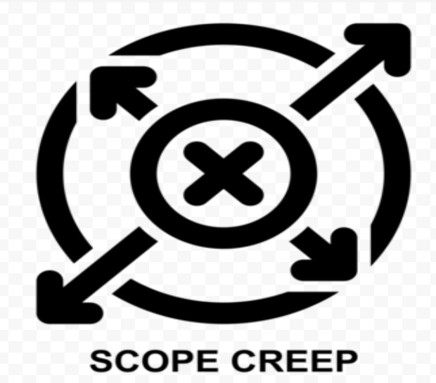
Program and project management professionals are likely familiar with the term “burndown chart,” yet not everyone realizes its significance in Agile methodology. A burndown chart is a vital tool that visually represents remaining work in a project or sprint alongside the work already completed. It helps teams track progress, identify potential bottlenecks, and evaluate whether they are on schedule to meet deadlines. By illustrating both completed and pending tasks, these charts enable teams to monitor their progress, address scope creep, and gauge a likelihood of completing work within allocated budget & time. This makes them indispensable for maintaining transparency and efficiency throughout a Software Development Life Cycle (SDLC). Below is a simplified example of a burndown chart:
Project Progress Tracking – Typical burndown chart provides a clear, visual summary of how much work has been completed and how much is left. This helps teams to stay aware of their progress/pace and ensures that they remain focused on achieving their sprint or project goals.
Task Progress & Transparency – It promotes openness with your team and stakeholders by showing status of work in real time. Everyone can see where a team stands and what challenges, if any, are awaiting their much-needed attention
Predictability – By comparing actual progress line with an ideal burndown line, teams can predict whether they are likely to complete (all) planned work within this sprint or project timeframe. It helps them with better planning and decision-making
Ability of Early Problem Detection– Deviations from an ideal burndown line highlights potential issues, such as delays, scope creep, or underestimation of work, this help teams to address these important issues proactively
Promotes Accountability – With team’s progress openly on display, burndown charts encourage members to stay vigilant/accountable for their progress/contributions and collaborate effectively to meet deadlines
Ability to Monitor Scope Creep – Sudden increases in remaining work line can indicate scope creep, these charts allow teams to identify and manage it before it impacts project/sprint success
Quick Wrap Up – A burndown chart is extremely important in Agile methodology because it aligns with Agile principles of adaptability, transparency, and continuous improvement. It affirms that teams remain on track, also fosters effective communication, eventually provides actionable insights to enhance productivity thus, a successful sprint completion

